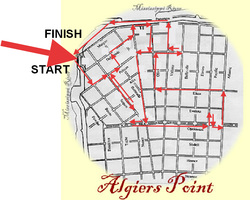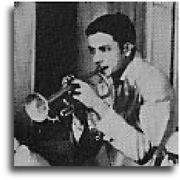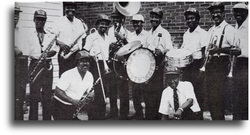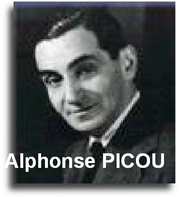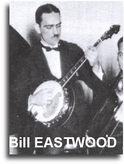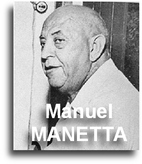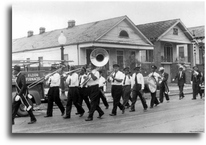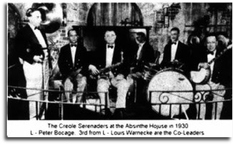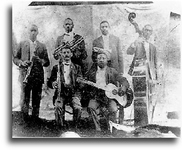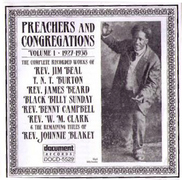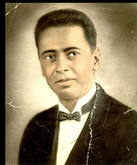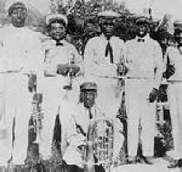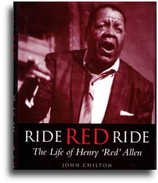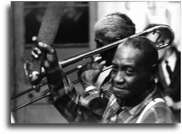Become a Tombstone Tourist
Cemeteries create unbelievable opportunities! You can "meet" your ancestors, walk in their footsteps and discover many hidden clues to color in those gaps in your family history. Cemeteries can be practical history lessons, peaceful garden retreats, outdoor art museums, as well as a place to connect both with the living and the dearly departed.
In this presentation, Ms. Rhonda ROEDERER, will share three intriguing stories surrounding her 30 plus years of cemetery research. First, you will learn how to recognize those hidden clues and listen to what your ancestors are whispering to you.
Second, learn how searching for one ancestor's grave led Rhonda on a world-wide adventure... visiting people and places never dreamed imaginable.
Finally, you will be on the edge of your seat as you listen to the shocking, real-life horror story surrounding a Kentucky cemetery where many of Rhonda's ancestors rest in peace... or do they?
You will leave inspired to plan your own personal tombstone tour and make connections that just may also change YOUR life.
Rhonda, Lafayette native, has recently retired from the oil industry, after having a long career as a consultant micropaleontologist.
Presently, she is working full time as a professional genealogist and educator. Her experiences are diverse, including organizing large family events and reuniting adoptees with their birth families. She has recently gained media attention with the story of her heart-warming connection with the descendants of slaves owned by one of her Mississippi ancestors.
There is no AHS meeting in December. See you at the Saturday, January 16, 2021 meeting.
Cemeteries create unbelievable opportunities! You can "meet" your ancestors, walk in their footsteps and discover many hidden clues to color in those gaps in your family history. Cemeteries can be practical history lessons, peaceful garden retreats, outdoor art museums, as well as a place to connect both with the living and the dearly departed.
In this presentation, Ms. Rhonda ROEDERER, will share three intriguing stories surrounding her 30 plus years of cemetery research. First, you will learn how to recognize those hidden clues and listen to what your ancestors are whispering to you.
Second, learn how searching for one ancestor's grave led Rhonda on a world-wide adventure... visiting people and places never dreamed imaginable.
Finally, you will be on the edge of your seat as you listen to the shocking, real-life horror story surrounding a Kentucky cemetery where many of Rhonda's ancestors rest in peace... or do they?
You will leave inspired to plan your own personal tombstone tour and make connections that just may also change YOUR life.
Rhonda, Lafayette native, has recently retired from the oil industry, after having a long career as a consultant micropaleontologist.
Presently, she is working full time as a professional genealogist and educator. Her experiences are diverse, including organizing large family events and reuniting adoptees with their birth families. She has recently gained media attention with the story of her heart-warming connection with the descendants of slaves owned by one of her Mississippi ancestors.
There is no AHS meeting in December. See you at the Saturday, January 16, 2021 meeting.
Louisiana Germans
Carol SCHLUETER will talk about “Louisiana’s Germans,” which will include a presentation of historic maps and other images that demonstrate the history, culture and accomplishments of the German immigrants, who settled in southeast Louisiana, starting in the early 1700's.
Ms SCHLUETER is director of the GermanAmerican Cultural Center (GACC), in Gretna, Louisiana.
The Gretna center, located at 519 Huey P. LONG Ave. and has a museum dedicated to the German immigrants who founded the town of Mechanikham in 1836. In 1913, it became the City of Gretna, and the ancestors of many of those German immigrants still live on the West Bank. Open to the public free of charge, the museum’s hours are 10 a.m. to 3 p.m., Wednesday through Saturday.
Support for the center is provided by its 300-plus members of the Friends of the GACC, who meet monthly for a program and dinner.
Carol SCHLUETER will talk about “Louisiana’s Germans,” which will include a presentation of historic maps and other images that demonstrate the history, culture and accomplishments of the German immigrants, who settled in southeast Louisiana, starting in the early 1700's.
Ms SCHLUETER is director of the GermanAmerican Cultural Center (GACC), in Gretna, Louisiana.
The Gretna center, located at 519 Huey P. LONG Ave. and has a museum dedicated to the German immigrants who founded the town of Mechanikham in 1836. In 1913, it became the City of Gretna, and the ancestors of many of those German immigrants still live on the West Bank. Open to the public free of charge, the museum’s hours are 10 a.m. to 3 p.m., Wednesday through Saturday.
Support for the center is provided by its 300-plus members of the Friends of the GACC, who meet monthly for a program and dinner.
The Spanish Influenza Epidemic Of 1918 In New Orleans
Just over 100 years ago the 1918 Spanish influenza pandemic reached New Orleans.
Emily FORD, owner and operator of Oak & Laurel Cemetery Preservation LLC, will explore its arrival, heroic efforts to combat it, and how its echoes are still present in New Orleans cemeteries, today
Ms FORD will also touch on some of the Spanish influenza aspects and how it relates to the present day COVID-19 pandemic.
Rescheduled To Next Year - 2021- because of the COVID-19 pandemic and the New Orleans Public Library not being open to the public, at this time.
In 2021, the same speaker, Kelly CALHOUN, a New Orleans historic preservationist, will still present on the purchase, renovation and listing, on the National Register of Historic Places, the former U. S. Quarantine Station, 3819 Patterson Dr. (river road) in lower coast Algiers.
Before the sale of this surplus federal property, about couple of years ago, it was the New Orleans Sector Headquarters of the U. S. Border Patrol, since the early 1960's. The Border Patrol relocated to the east bank of New Orleans
Just over 100 years ago the 1918 Spanish influenza pandemic reached New Orleans.
Emily FORD, owner and operator of Oak & Laurel Cemetery Preservation LLC, will explore its arrival, heroic efforts to combat it, and how its echoes are still present in New Orleans cemeteries, today
Ms FORD will also touch on some of the Spanish influenza aspects and how it relates to the present day COVID-19 pandemic.
Rescheduled To Next Year - 2021- because of the COVID-19 pandemic and the New Orleans Public Library not being open to the public, at this time.
In 2021, the same speaker, Kelly CALHOUN, a New Orleans historic preservationist, will still present on the purchase, renovation and listing, on the National Register of Historic Places, the former U. S. Quarantine Station, 3819 Patterson Dr. (river road) in lower coast Algiers.
Before the sale of this surplus federal property, about couple of years ago, it was the New Orleans Sector Headquarters of the U. S. Border Patrol, since the early 1960's. The Border Patrol relocated to the east bank of New Orleans
3 Walking Tours of Algiers Point
Ride the Canal Street/Algiers Point Ferry from the French Quarter Across the Mighty Mississippi to Algiers.
Historic Walking Tour Algiers PointSettled 1719, Algiers Point is New Orleans’ second oldest neighborhood and listed on the National Register of Historic Places. Walk the quiet streets of this 19th century village and discover the "Secret Jewel of New Orleans" Suggested Route (approx. 2 miles) Researched and written by Judi ROBERTSON and Kevin HERRIDGE.
The "Jazz Walk of Fame" tour is downloadable to cell phones or printable in a PDF brochure from the National Park Service. The phone number is (504) 613-4062.
|
|
"Over da River" Jazz TourTHIS SELF-GUIDED WALKING TOUR INCLUDES former homes of Algiers’ Jazz musicians, the venues they played in, the Robert E. Nims Jazz Walk of Fame, the best view of New Orleans skyline
BACKGROUND Jazz musicians of the 1920s referred to Algiers as "over da river" or the "Brooklyn of the South," the latter for its proximity to New Orleans as compared to New York and Brooklyn, both separated by a river. This tour concentrates on the Algiers Point neighborhood, that has a long, rich history of African American, French, Spanish, German, Irish, and Italian/Sicilian residents. Algiers, the second oldest neighborhood in New Orleans after the French Quarter, was the site of the slave holding areas, newly arrived from Africa, the powder magazine, and slaughterhouse of the early 18th century. John McDONOGH, the richest man, and largest landowner in New Orleans, lived here. Algiers was famous countrywide in the African American communities for its "Voodoo" and "Hoodoo" practitioners, and is celebrated in songs on this subject. The earliest bands containing Algiers’ musicians included the Pickwick Brass Band (1873-1900s), the Excelsior Brass Band (1880-1928), Jim DORSEY’s Band (1880s), Prof. MANETTA’s String Band (1880s), BROWN’s Brass Band of McDonoghville (1880s), and Prof. A. L. TIO’s String Band (aka the Big Four) (1880s), the Pacific Brass Band (1900-1912), and Henry ALLEN’s Brass Band (1907-1940s). These dates are approximate, as very little evidence has been found of definite dates. Many of the Jazz venues have long since disappeared, as have many of the
musicians’ homes. Most of the saloons, and dance halls are all but forgotten now by the modern-day Algiers’ residents. Gone are the days of Jazz funerals every week, the sound of dancing feet in the juke joints, and dance halls, and corner saloons. |
Other Algiers’ bands included the Tom ALBERT Band, the Algiers Brass Band, the Algiers Naval Station Band, Mervin BUDGE’s Band, Peter BOCAGE’s Creole Serenaders, the Norman BROWNLEE Band, the Charles DEVERGE Band, George LEWIS’ Ragtime Jazz Band, Billy LUFT’s Band, Bert PECK’s Princeton Revellers, the Sam ROSS Orchestra, Leslie STURTEVANT’s Band, the Elton THEODORE Orchestra, Charlie LOVE’s Band, Sam MORGAN’s Band, and "Kid" Thomas VALENTINE’s Algiers Stompers, to name a few.
Jazz, Blues, Rhythm & Blues, and Rock & Roll artists were born, lived or played on the right bank of the Mississippi River from the Magnolia Plantation in Pointe a la Hatche to Westwego, and beyond. Algiers and Gretna has been the birthplace of, or home to, a long list of musicians including the ADAMS family, Tom ALBERT, Henry ALLEN, Sr., Henry "Red" ALLEN, Harrison BARNES, Ronnie BARRON, Nick BENINATE, the BOCAGE Family, the BROWNLEE family, the BRUNIES family, Mervin BUDGE, Joseph "Kid Twat" BUTLER, the DAST family, George DAVIS, Henry DEFUENTES, Charles DEVERGES, the DOUROUX family, Frank DUSON, Bill EASTWOOD, Albert "Dude" GABRIEL, Wendell GREEN, Emmett HARDY, Clarence "Frogman" HENRY, George HOOKER, Edward "Son" HOUSE, Joe JAMES, the JOHNSON family, the LINDSAY family, Charlie LOVE, George LEWIS, Joseph "Bobo" LEWIS, Billy LUFT, the MANETTA family, the MARCOUR family, the MATTHEWS family, Elizabeth "Memphis Minnie" DOUGLAS, Bobby MITCHELL, Jackson MOLAISON, Sam MORGAN, Eddie MORRIS, the MOSLEY family, Louis NELSON, Jimmie NOONE, Jimmie "SPRIGGS" PALAO, Bert PECK, Alphonse PICOU, Eddie PIERSON, Sam ROSS, Ovide "Tete" ROUCHON, George SIMMS, Louis SINO, Leslie STURTEVANT, Joe "Brother Cornbread" THOMAS, Bennie TURNER, "Kid" Thomas VALENTINE, Eddie VINCENT, the YOUNG family, to name a few! |
"Brooklyn of the South" Jazz TourFor the more adventurous and intrepid jazz history buff, this longer tour takes you across Opelousas into the less gentrified part of Algiers.
"This tour concentrates on the often-unsung heroes, the African American musicians, who played such a great part in the history of New Orleans Jazz, and in some small way salutes their contribution to Jazz, and their rich culture. Although Algiers’ musicians played a major part in the history of Jazz and Blues, these genres of music were not born in Algiers…or were they? -- Kevin HERRIDGE This 2-mile SELF-GUIDED WALKING TOUR includes both the
Algiers Point & Algiers Riverview neighborhoods. "We encourage you to use good judgment & common sense in taking this tour (or any tour) in an urban area.– New Orleans Jazz Commission. The Algiers Point and Algiers Riverview neighborhoods are both integral parts of historic Algiers, each having a long, rich history of African American, French, Spanish, German, Irish, and Italian/Sicilian residents. This was the site of the slave holding areas, newly arrived from Africa, and the powder magazine of the early 18th century. John McDONOGH, the richest man in New Orleans, lived here, as well as the earliest account of music on the West Bank. The Riverview area contains many African American churches, some with over one hundred-year histories. One on the scene in days gone by was the scene of many fiery sermons of "Black Billy Sunday," and many Jazz funerals, held for musicians, and benevolent society members. Several of the local musicians are interred in the nearby St. Bartholomew, St. Mary, and McDonogh cemeteries. |
Take the Canal Street ferry to Algiers (leaves quarter to, and quarter past the hour from the foot of Canal Street). Turn right from the ferry terminal, and come downhill onto Bouny St., towards the Dry Dock Café & Bar.
The street to your left is Delaronde. Frankie DUSON (1878-1936) trombonist, and leader of the remnants of Buddy BOLDEN’s Band (under the new name of the Eagle Band), lived at number 162 (no longer standing) from 1894-1897. He also played on the "S.S Capitol," with the E.R.A. Orchestra in the Depression, and with Louis DUMAINE. He was musically active until the mid-1930s. Continue on Bouny St. and turn left onto Alix St. (Start the tour!) Some of the earliest brass bands that influenced the birth of Jazz, including the Pickwick, the Excelsior, and the Pacific, employed Algiers’ musicians. Buddy BOLDEN and Louis ARMSTRONG were two of the many Jazz luminaries that paraded through these streets. Another Jazz legend, Lester YOUNG, lived in Algiers, and his father, Willis Handy YOUNG, paraded with Henry ALLEN, Sr.’s Brass Band. Blues legend, Elizabeth DOUGLAS, better known as "Memphis Minnie," was born here, and sings of Algiers in her 1940 recording, "Nothing In Rambling."
|
Algiers was famous countrywide in the African American communities for its "Voodoo" and "Hoodoo" practitioners, and celebrated in song by Willie BRYANT,
Roosevelt SYKES, Charlie SPAND, George WILLIAMS and Bessie BROWN, Brownie McGHEE (recorded as "Blind Boy" FULLER), "Kid" Thomas VALENTINE, Henry "Red" ALLEN, Billie and Dee Dee PIERCE, and J. B. LENOIR.
Roosevelt SYKES, Charlie SPAND, George WILLIAMS and Bessie BROWN, Brownie McGHEE (recorded as "Blind Boy" FULLER), "Kid" Thomas VALENTINE, Henry "Red" ALLEN, Billie and Dee Dee PIERCE, and J. B. LENOIR.
